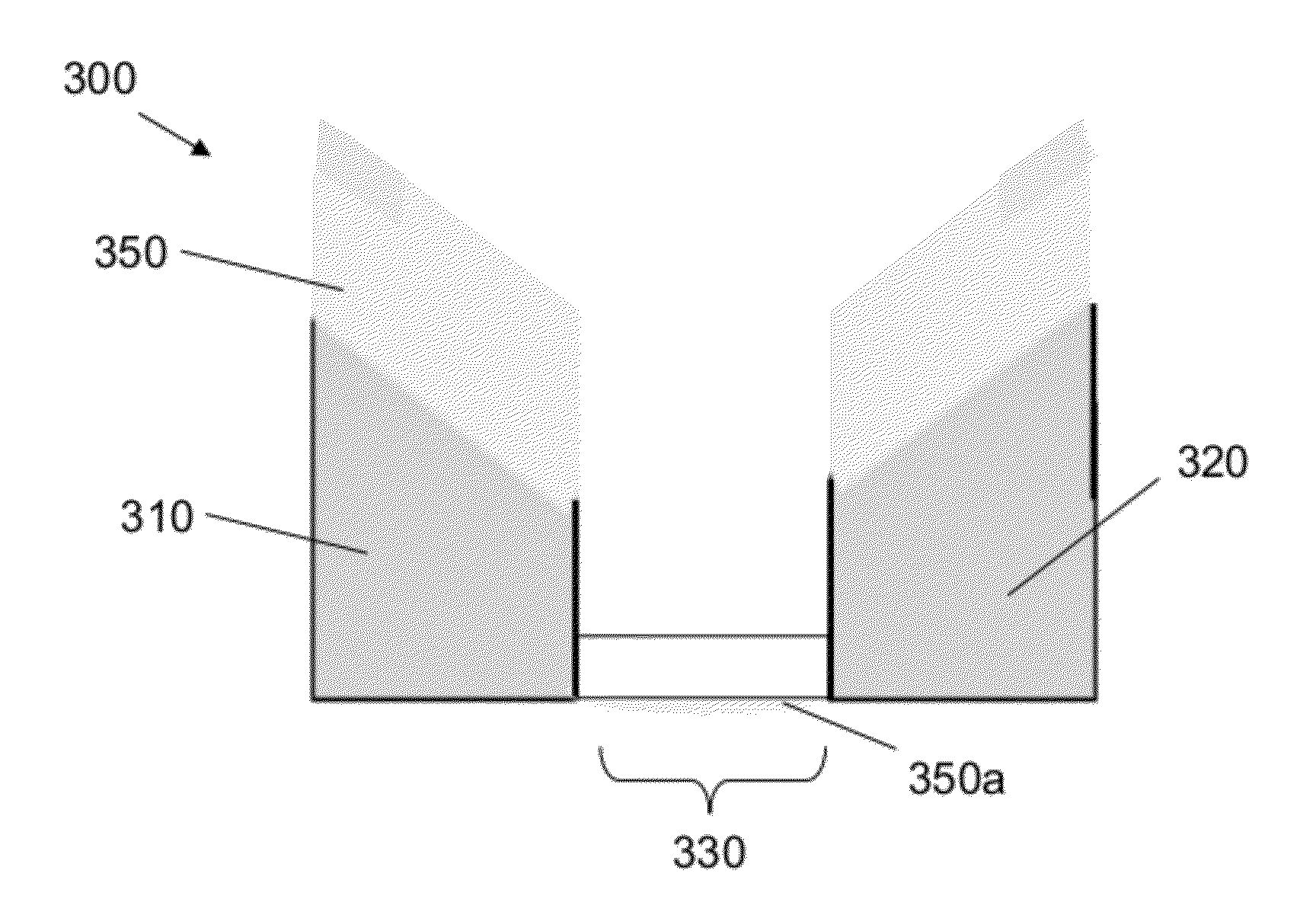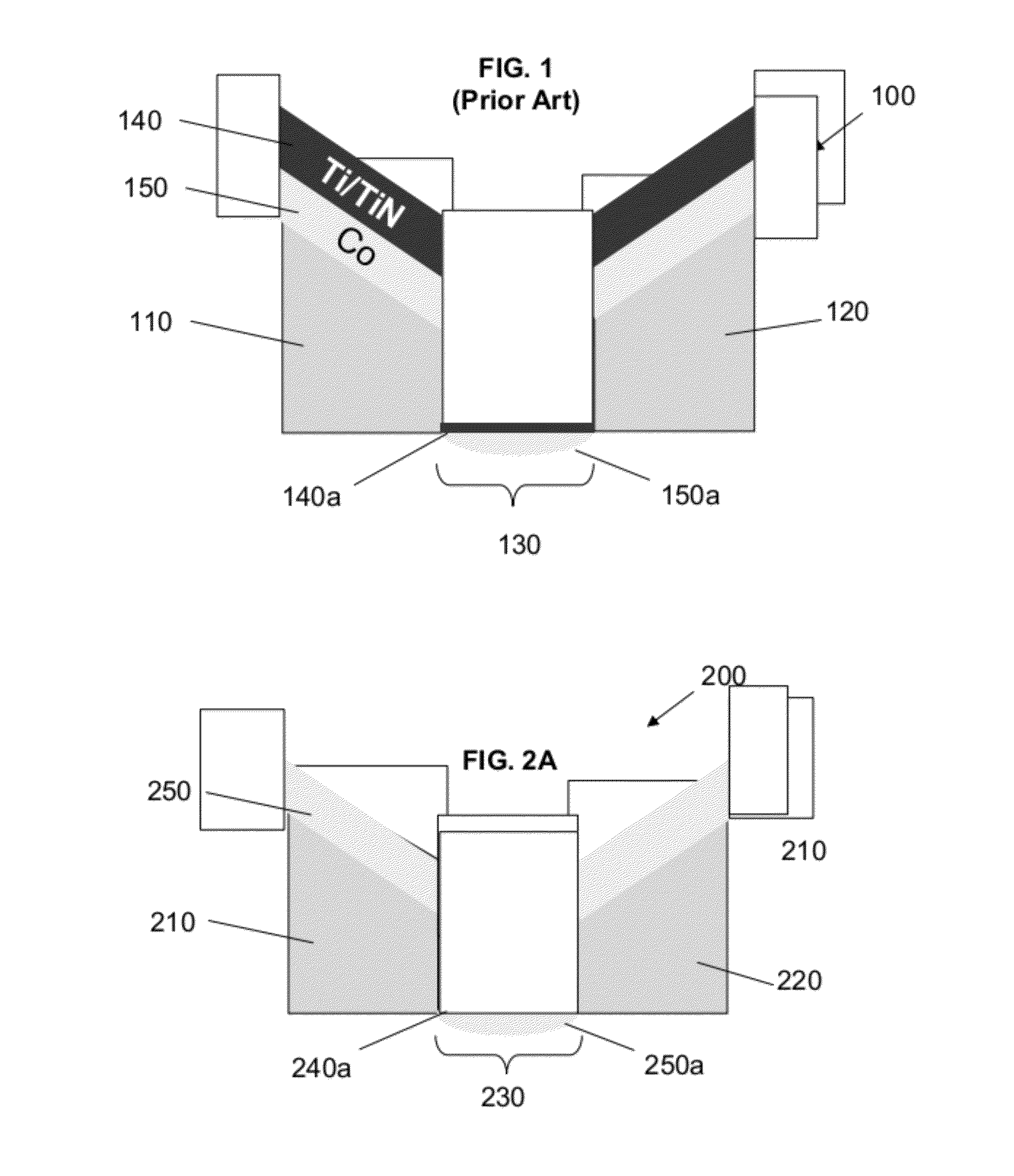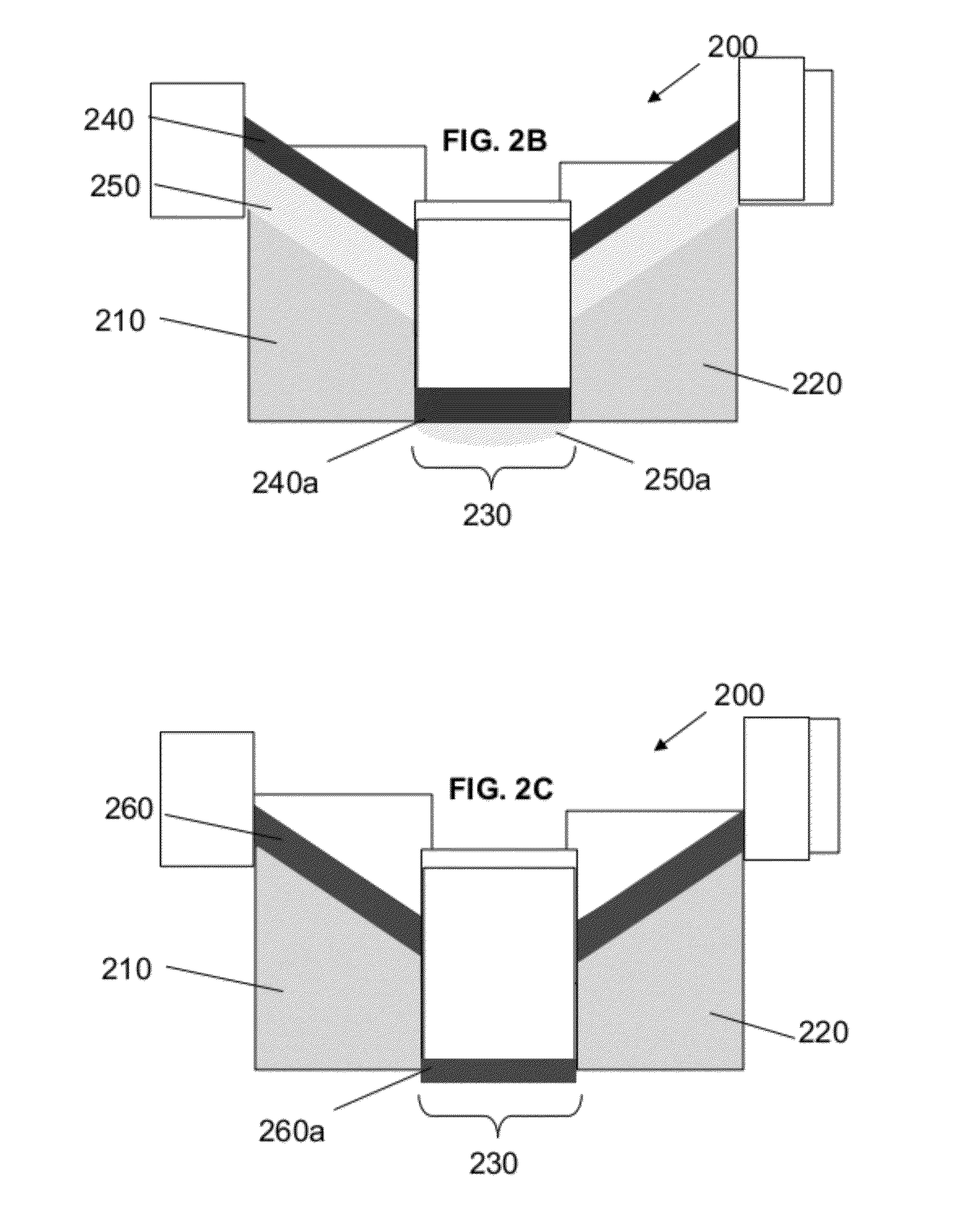Metal silicide formation
a technology of metal silicide and contact pads, which is applied in the field of new metal silicide contact pads and processes, can solve the problems of junction leakage, line width limitations, and the end of the trend of ever smaller and denser devices
- Summary
- Abstract
- Description
- Claims
- Application Information
AI Technical Summary
Benefits of technology
Problems solved by technology
Method used
Image
Examples
Embodiment Construction
[0018]FIG. 2A illustrates a cross-sectional view of a semiconductor device 200 in the process of being fabricated in accordance with one embodiment of the disclosed principles. As shown in FIG. 2A, the semiconductor device 200 includes raised device features 210, 220, which in an exemplary embodiment are wordlines 210, 220 formed on a substrate. In such exemplary embodiments, the wordlines 210, 220 may be formed to a thickness of about 300˜5 kÅ. Of course, the raised features 210, 220 may also be other device features on which a metal silicide, or a salicide, contact pad will be formed. Typically, the raised features 210, 220 comprise polysilicon, but they may also comprise other silicon-based materials that can be reacted with metals to form metal silicide on the exterior surface thereof.
[0019]Also illustrated in FIG. 2A, in accordance with the disclosed principles, a metal layer 250 is deposited directly on the wordlines 210, 220, as well as a metal layer 250a being deposited dire...
PUM
 Login to View More
Login to View More Abstract
Description
Claims
Application Information
 Login to View More
Login to View More - R&D Engineer
- R&D Manager
- IP Professional
- Industry Leading Data Capabilities
- Powerful AI technology
- Patent DNA Extraction
Browse by: Latest US Patents, China's latest patents, Technical Efficacy Thesaurus, Application Domain, Technology Topic, Popular Technical Reports.
© 2024 PatSnap. All rights reserved.Legal|Privacy policy|Modern Slavery Act Transparency Statement|Sitemap|About US| Contact US: help@patsnap.com










